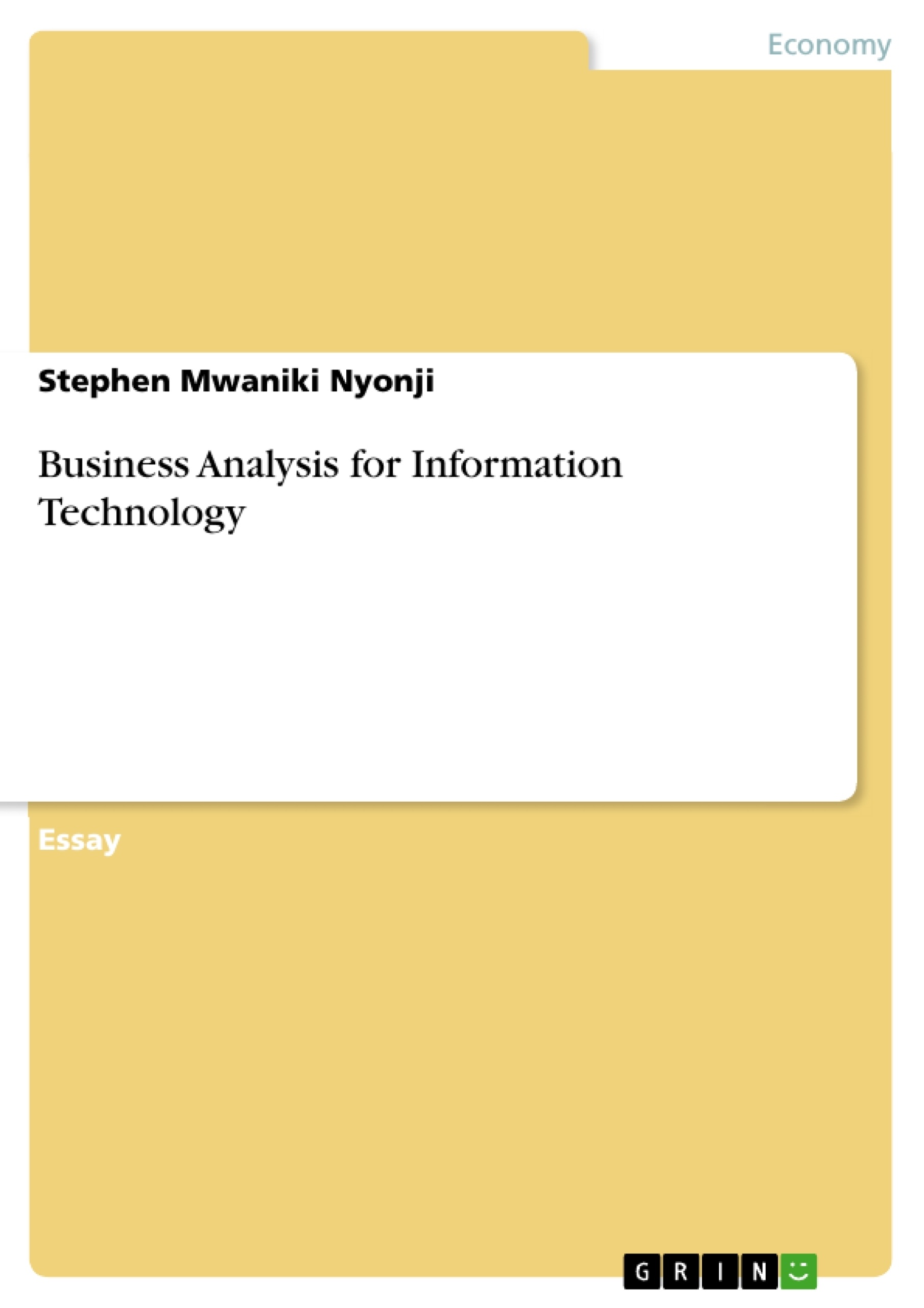Business analysis is the art and science of determining the needs of the business in order to guide the business to perpetual success. This is important in order to ensure that the needs of the business are met and that there is a fit between the needs of the business and the technology that is being offered. As Carkenord (2009) says, the analysis is vital as it affects business decisions at an executive, managerial and functional level. In this article, I look at what business analysis is and the challenges that business analysts go through when carrying it out.
I believe that there are a number of interconnected reasons why business analysis is such a big challenge to analysts. First, it involves predicting the future, which means that there is never a hundred percent guarantee that the analysis is a complete view of what the business needs. In most cases, the business analysis has to deal with massive data and this is hard to analyze (Fleisher & Wright, 2010). The idea of using data and information to carry out a business analysis is that this data has both a signal that the analyst can use to determine what the business needs, and the noise that can play tricks on the analyst. This is, however, not always an easy task due to a number of reasons which I suppose need a lot of experience before one can master them. For instance, incomplete information either due to missing data, spoiled data or discarded information can lead to ineffective business analysis. Furthermore, even in the cases where the business has all the information, although this is rare, the information needs to be shared extensively at all levels from the executive level to the functional or operational level. This is not always possible due to the need to keep some of the information secret to protect the strategy of the business from being accessed by competitors.
More than anything else, however, the thing that makes business analysis an almost impossible endeavor is the fact that there are millions of factors to be considered. There are millions of factors to determine whether the analysis will be of any good to the business. Business analysts are also limited with regard to their cognitive functions, and so processing all the information at their disposal is a major challenge. This is especially as the number or of bits of information increases in number and complication (Fleisher & Wright, 2010). However, while Fleisher and Wright (2010) argue that the limited brain capacity is a major challenge to business analysis, they have not considered that the recent past has introduced lots of computer-based tools that analysts can use for their work. These tools, combined with human intelligence, can improve the process of business analysis (Davis, 2012).
The other challenges that Fleisher and Wright (2010) quote is that analysts may also have too much confidence with regard to the accuracy of their past analysis. For instance, if an analyst has in the past been able to do an analysis that led to success, they may attribute hundred percent of that success to their analysis and so believe that they can do the same. Fleisher and Wright (2010) also point out that one of the challenges that analysts face in their work is the fact that most business executives may not have an appreciation for the intelligence reports. This applies for all business analysts whether they are internal or external consultants. However, I think that Fleisher and Wright have failed to recognize that this problem is fading way because as Hass et al. (2007) say, the modern executive is more appreciative of this kind of analysis and how it relates to the success of IT systems in the firm and therefore the competitiveness of the business in the market.



